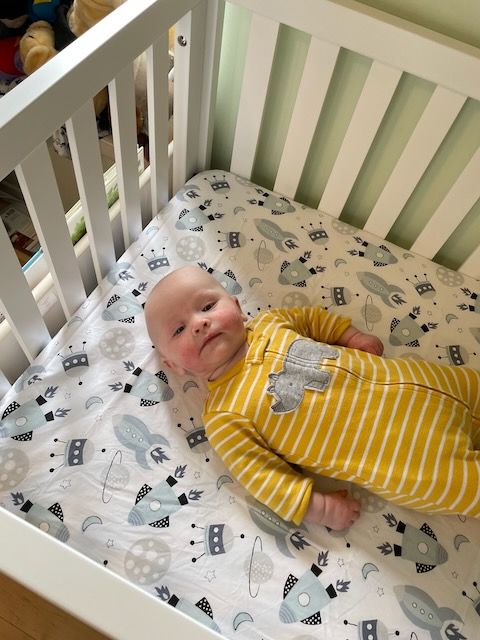Should you spend $1,800 on a "smart bassinet"? Hell, maybe
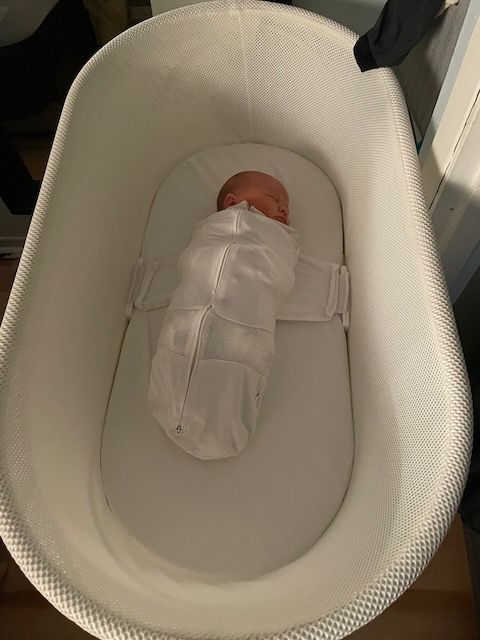
Sleep has always been very important to me. I crave it. I enjoy it. I am quite good at it. Part of the reason I like working as a freelance writer is that I get to greatly limit the days where the harsh shrill of an alarm wakes me up. I can live life on my preferred schedule, which generally involves staying up late and sleeping in.
I knew, of course, that having a baby would throw a wrench into that schedule. I was ready for that. But I also figured it would be a good idea to take whatever steps possible that could help avoid some of the sleep deprivation that comes with parenthood.
Enter: the Snoo.
For those not familiar, the Snoo is a so-called "smart bassinet." Created by American pediatrician Harvey Karp, it purports to be the "world’s smartest and safest baby bed!" Sure, okay.
In practice, it involves strapping your kid into a straightjacket-looking swaddle, then clipping them into a place in a big heavy bassinet with a mattress base that slowly rocks them back and forth, like the world's slowest and most ineffective hardware store paint mixer.
At the same time, it generates white noise that is supposed to remind babies of what it sounded like when they were in the womb.
The "smart" part comes via sensors that detect whether a baby is fussing. If they are, it ratchets up the speed of the rocking and the volume of the white noise, until it either detects that your baby is calm, or decides that your baby just can't be soothed by modern technology and needs human intervention.
There's also, inevitably, an app. You can use your phone to review sleep data and figure out trends.
This all sounds a bit ridiculous, I know. And the next thing I am going to tell you won't make it sound any less ridiculous.
Ready? Here goes. This contraption costs more than 1,800 Canadian dollars.
But we got one for Freddie, of course. I've never met a gadget that I'm not at least a little interested in buying. And, like I said, sleep is important to me, and we had heard enough glowing reviews of the Snoo that we figured it could be worth a shot.
Two things really helped us make the decision.
First, instead of paying the huge cost to buy a Snoo, you can just rent one. We were able to source a three-month rental from Birth by the Doula Way. The cost was much more reasonable than a purchase, and it builds in some protection in the event your baby just doesn't like the Snoo for whatever reason. At the end of the rental period, you can just return it and pretend the whole thing never happened and that you would never do anything so absurd as considering spending $1,800 on a bassinet.
Second, we were going to need some kind of sleeping product anyway, whether that be a full-size crib, some kind of regular non-smart bassinet, or a co-sleeping solution like a sidecar crib. We weren't so big on the idea of bed-sharing, but also understood that sometimes that's the only sleep solution that works for parents.
The problem is that babies are all different, and there's no way of knowing how they'll like to sleep — or if they'll like to sleep — until they're here. So I liked the idea that the Snoo rental gave us some flexibility to see what works and what doesn't. (You can always unplug the Snoo and just use it as a regular un-smart bassinet.)
And so the Snoo arrived at our house on December 15, which happened to be the same day Erin gave birth, almost two weeks early. Really maximized our rental time.
Did it work? Well, that's hard to say, objectively. To run a valid experiment, I'd probably need to have like ten babies using Snoos each night, and ten babies not using Snoos as a control group. And I'd need to account for various external factors like environment, food, overall health... Look, I'm not going to do any of this.
So all I can tell you is that Freddie's Snoo sleep started out like this — this is 12 days after he was born, according to the app:
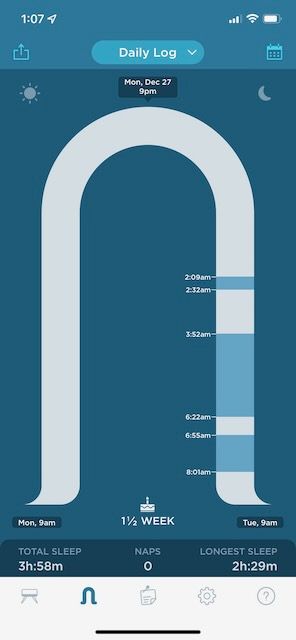
And ended up like this — this is just shy of eight weeks:
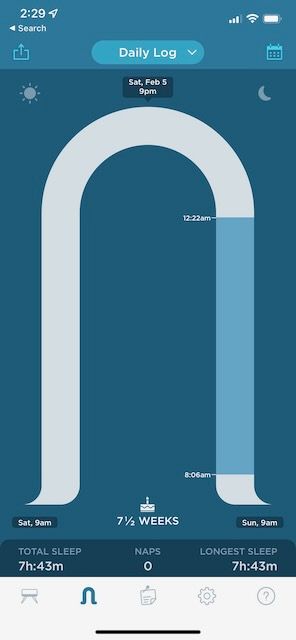
We liked it enough that I pretty quickly extended the rental period by another two months. We have it until May 15, though I have now boxed it up. Freddie successfully transitioned into his own big-guy crib last weekend.
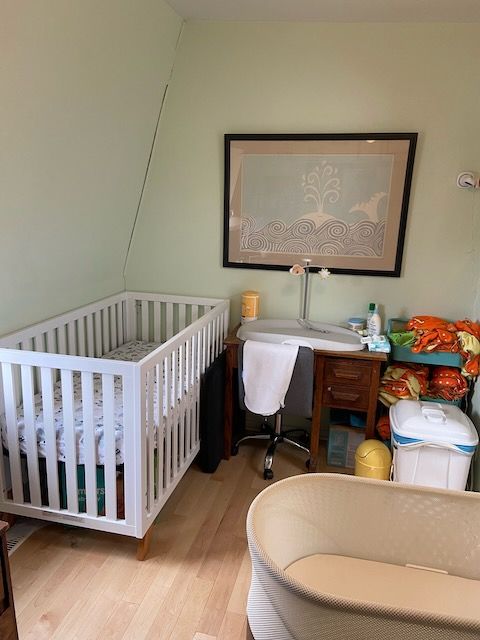
Would he have been a good sleeper without the Snoo? Probably. He's a unicorn baby. He does unicorn things. But I've got to believe that it helped, even if only at the margins. And given that sleep deprivation seems to be at the root of almost everything that can make the newborn stage so harrowing, it seems worth spending the money — if you've got it — on things that can alleviate it.
If you just can't get over the cost — even of the rental option — I get it. But for new and prospective parents, I'd counter with this: you've got a kid now. You're probably going to spend a lot of money buying the kid stupid shit over the next eighteen years, or more. It's baked in.
When I was a kid, I successfully begged my parents for several varieties of Super Soaker water guns, convinced that I'd be publicly shamed if I had Super Soakers that were rated below the Super Soakers of my friends for any given summertime water fight season. There were hundreds upon hundreds of dollars wasted on light-up shoes, Pogs (and slammers, of course) and silly video game accessories like the Super Scope 6 that chewed through six AA batteries in what felt like 20 minutes.
Kids aren't cheap. And the Snoo is, at least, one extravagant and ridiculous purchase for your kid that might actually benefit you as the parent. Sleep is a precious resource. Makes sense to value it.
